GrabCAD
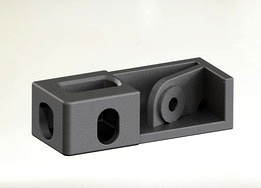
ISO 1161 BLOCK in MULTIPLE IS0 668 CONTAINER CONFIGURATIONS
by GrabCAD
Last crawled date: 1 year, 11 months ago
LEGACY PAGE : I HAVE WITHDRAWN THE PARAMETRIC MODELS BUT HAVE LEFT THE PAGE TO RETAIN DOWNLOAD & "LIKE" DATA
THIS MODEL SUPERCEDES PREVIOUS POSTED MODEL OF ISO 1161 CORNER BLOCKS
Due to small dimensional inaccuracies of previous model generated from a non-compliant ISO 1161 Block drawing ( https://grabcad.com/library/container-iso-dual-corner-block-1 ), I have gone back and compiled from scratch a new set of models based on a DNV dimensional drawing (Rules for Certification of Freight Containers 1981, Appendix 4.1- Top Blocks, Appendix 4.2-Bottom Blocks) for the ISO 1161 corner blocks used in this new Solidworks Assembly. The set consists of 5 Solidworks files. 1st part is a framework sketch to hang the blocks on which has various container size configurations. The 2nd part is the Bottom Right Block which is used to create a mirrored part for the Bottom Left block (3rd Part). The model uses 2 of each of these parts to create the base. The top blocks (Parts 4 and 5) like the base blocks are mirrored from each other (Top Right Block mirrored to create Top Left Block) and require 2 of each. The Top Blocks have additional configurations. Default block is the standard ISO 1161 type with additional sub-configurations for the various sized padeye extension blocks.
Be aware that there are many manufacturers of these blocks which may differ in materials used, capacities, slight dimensional variances. Provided is a generic block within tolerance and up to the user to confirm that they conform to their existing or available units. I use this Model assembly for layout purposes or creating visual models. They should not be used as a definitive model for as built purposes unless measurements are confirmed to existing or supplied items.
Included in this update are revisions and expanded configurations for general range of ISO 668 containers. Now added are the following configurations & container size range:
ISO 668 Container - 1A (8x40 Ft (LxW)) x Height :1A : 8’ / 1AA : 8- ½’ / 1AAA : 9- ½’
ISO 668 Container – 1B (8x30 Ft (LxW)) x Height :1B : 8’ / 1BB : 8- ½’ / 1BBB : 9- ½’
ISO 668 Container – 1C (8x20 Ft (LxW)) x Height :1C : 8’ / 1CC : 8- ½’ / 1CCC : 9- ½’
ISO 668 Container – 1D (8x10 Ft (LxW)) x Height :1D : 8’ / 1DD : 8- ½’ / 1DDD : 9- ½’
ISO 668 Container – 1E (8x45 Ft (LxW)) x Height :1AA : 8- ½’ / 1AAA : 9- ½’
Additional sub-configurations are included for the DUO ISO 1161 Blocks with Padeye extension for the 8 x 10’ , 8 x 20’ and 8 x 30’ container lengths. (D-C-B range). I have changed the padeye design in line with other observed existing padeye types. The details for sizing of the padeyes are based on a freely downloaded pdf file for Assymmetrical padeyes (www.engineeringspreadsheets.co.uk ). The determined padeye capacity is based on a general container size weight ratio with 2 of the 4 padeyes able to safely support weight. Usual construction practice includes gusset plates extending from long end of padeye block to upright legs on outer side faces.
8x10’ container (1D range) pad eye : 6.5 tonne SWL with 28mm hole per each (x4)
8x20’ container (1C range) pad eye : 8.5 tonne SWL with 31mm hole per each (x4)
8x30’ container (1B range) pad eye : 9.5 tonne SWL with 34mm hole per each (x4)
Additional framework sketch for padeye blocks gives a general indication of sling length sizing for 30°-45°-60° angular inclinations for constructing a 4 legged sling for the container range. This will help in determining crane hook height clearance as well as height access for cranes. For determining an actual required sling construction & configuration which would account for lift weight and other parameters, there is a freely distributed MS excel workbook file (SLINGPRO Vn 5-1:2017 / www.engineeringspreadsheets.co.uk ) that specifies rigging arrangement & sizes to meet the various standards ( EN 13414 (2008), DNV 2.7-1 (2003), DNV-OS-H205 (2014), EN 818 [chain] (2008)). Presently I use this file to assist with compiling sling specifications for various offshore equipment rigging projects. Presently in the process of building a Rigging Library with various components as well as easily configured soft & wire rope slings for expeditiously creating rigging plans, procedures and project lifting equipment inventories.
THIS MODEL SUPERCEDES PREVIOUS POSTED MODEL OF ISO 1161 CORNER BLOCKS
Due to small dimensional inaccuracies of previous model generated from a non-compliant ISO 1161 Block drawing ( https://grabcad.com/library/container-iso-dual-corner-block-1 ), I have gone back and compiled from scratch a new set of models based on a DNV dimensional drawing (Rules for Certification of Freight Containers 1981, Appendix 4.1- Top Blocks, Appendix 4.2-Bottom Blocks) for the ISO 1161 corner blocks used in this new Solidworks Assembly. The set consists of 5 Solidworks files. 1st part is a framework sketch to hang the blocks on which has various container size configurations. The 2nd part is the Bottom Right Block which is used to create a mirrored part for the Bottom Left block (3rd Part). The model uses 2 of each of these parts to create the base. The top blocks (Parts 4 and 5) like the base blocks are mirrored from each other (Top Right Block mirrored to create Top Left Block) and require 2 of each. The Top Blocks have additional configurations. Default block is the standard ISO 1161 type with additional sub-configurations for the various sized padeye extension blocks.
Be aware that there are many manufacturers of these blocks which may differ in materials used, capacities, slight dimensional variances. Provided is a generic block within tolerance and up to the user to confirm that they conform to their existing or available units. I use this Model assembly for layout purposes or creating visual models. They should not be used as a definitive model for as built purposes unless measurements are confirmed to existing or supplied items.
Included in this update are revisions and expanded configurations for general range of ISO 668 containers. Now added are the following configurations & container size range:
ISO 668 Container - 1A (8x40 Ft (LxW)) x Height :1A : 8’ / 1AA : 8- ½’ / 1AAA : 9- ½’
ISO 668 Container – 1B (8x30 Ft (LxW)) x Height :1B : 8’ / 1BB : 8- ½’ / 1BBB : 9- ½’
ISO 668 Container – 1C (8x20 Ft (LxW)) x Height :1C : 8’ / 1CC : 8- ½’ / 1CCC : 9- ½’
ISO 668 Container – 1D (8x10 Ft (LxW)) x Height :1D : 8’ / 1DD : 8- ½’ / 1DDD : 9- ½’
ISO 668 Container – 1E (8x45 Ft (LxW)) x Height :1AA : 8- ½’ / 1AAA : 9- ½’
Additional sub-configurations are included for the DUO ISO 1161 Blocks with Padeye extension for the 8 x 10’ , 8 x 20’ and 8 x 30’ container lengths. (D-C-B range). I have changed the padeye design in line with other observed existing padeye types. The details for sizing of the padeyes are based on a freely downloaded pdf file for Assymmetrical padeyes (www.engineeringspreadsheets.co.uk ). The determined padeye capacity is based on a general container size weight ratio with 2 of the 4 padeyes able to safely support weight. Usual construction practice includes gusset plates extending from long end of padeye block to upright legs on outer side faces.
8x10’ container (1D range) pad eye : 6.5 tonne SWL with 28mm hole per each (x4)
8x20’ container (1C range) pad eye : 8.5 tonne SWL with 31mm hole per each (x4)
8x30’ container (1B range) pad eye : 9.5 tonne SWL with 34mm hole per each (x4)
Additional framework sketch for padeye blocks gives a general indication of sling length sizing for 30°-45°-60° angular inclinations for constructing a 4 legged sling for the container range. This will help in determining crane hook height clearance as well as height access for cranes. For determining an actual required sling construction & configuration which would account for lift weight and other parameters, there is a freely distributed MS excel workbook file (SLINGPRO Vn 5-1:2017 / www.engineeringspreadsheets.co.uk ) that specifies rigging arrangement & sizes to meet the various standards ( EN 13414 (2008), DNV 2.7-1 (2003), DNV-OS-H205 (2014), EN 818 [chain] (2008)). Presently I use this file to assist with compiling sling specifications for various offshore equipment rigging projects. Presently in the process of building a Rigging Library with various components as well as easily configured soft & wire rope slings for expeditiously creating rigging plans, procedures and project lifting equipment inventories.
Similar models
grabcad
free

Container ISO Dual Corner Block
... 9-1/2' height & 10' & 20' long containers (tl-br top left-bottom right , tr-bl top right- bottom left block)
grabcad
free

Bell X-1A / X-1B / X-1D / X-1C
...bell x-1a / x-1b / x-1d / x-1c
grabcad
my project paper model bell x-1a / x-1b / x-1d / x-1c 1/33
grabcad
free

20Ft Container with dual lift point
...
1) standard 20ft iso cube x 8- ½ ft height
2) dual eye block 20ft container
3) dual eye block 20ft container with 4 legged sling
grabcad
free

ISO CONTAINER - 1AAA - (HICUBE) 40’ (12m)
...iso container - 1aaa - (hicube) 40’ (12m)
grabcad
iso container - 1aaa - (hicube) 40' (12m)
grabcad
free

ISO CONTAINER 1AAA STD 40' (12m)
...iso container 1aaa std 40' (12m)
grabcad
iso container 1aaa std 40' (12m)
grabcad
free

ISO CONTAINER 1AAA HICUBE 40' (12m)
...iso container 1aaa hicube 40' (12m)
grabcad
iso container 1aaa hicube 40' (12m)
thingiverse
free

HO Scale 1AAA Container by 2Bzki
...ho scale 1aaa container by 2bzki
thingiverse
an iso 1aaa container in ho scale
3dwarehouse
free
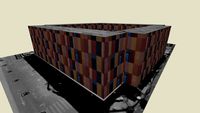
Edificio Bulevar de la Naturaleza, 1A, 1B, 1C, 1D
...rehouse
edificio bulevar de la naturaleza, 1a, 1b, 1c, 1d, conocido como el colorines ensanche de vallecas. #colorines #ensanche
grabcad
free

APEA Type X Padeye
...apea type x padeye
grabcad
type x padeye to apea specification
size range: 3.2t to 55t
grabcad
free

ISO 668 SHIPPING CONTAINER
...o produce highly accurate models as well as inclusion of additional components such as custom seals and standard csc data plates.
1161
3ddd
$1
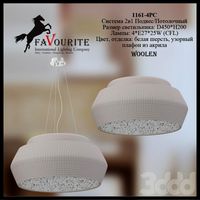
Favourite 1161-4PC
...favourite 1161-4pc
3ddd
favourite
favourite 1161-4pc
turbosquid
$15

human-1161
... available on turbo squid, the world's leading provider of digital 3d models for visualization, films, television, and games.
3d_export
$50

3D Home 1161 3D Model
...chair furniture texture table lamp apartment rug carpet restaurant hotel sitting
3d home 1161 3d model richard3015 45303 3dexport
3ddd
$1
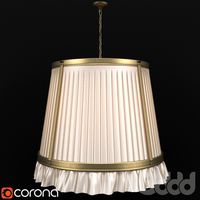
Люстра Divinare 1161/01 SP-1
...ость - 40. цвет арматуры - бронзовый. цвет плафона - бежевый. материал арматуры - металл. материал плафона - ткань. высота - 520.
3ddd
$1

Бра ф. Baga
...бра ф. baga 3ddd baga бра ф. baga арт. 1161 ...
3d_export
$12

Juniper Thuja And Cypress For Park Garden Forest 1161
...er, juniper, coniferous trees, coniferous trees, topiary, topiary, tree, trees, set, set, collection, forest, park, trees, garden
archive3d
free

Sconce 3D Model
...sconce 3d model archive3d sconce lamp-bracket lantern sconce baga 1161 n220311 - 3d model (*.gsm+*.3ds) for interior 3d...
3ddd
free

Puris коллекция Crescendo
...цвет фасада: белый высокоглянцевый (722) цвет корпуса: белый высокоглянцевый (1161 возможные размеры для данной коллекции : 900,...
3d_ocean
$12

Roman Ship
...specular in alpha channels. tga 2048x2048. 1528 verts and 1161 tris max 2011 and 2013 obj fbx – exported...
3d_export
$5

imi defense - fsg2 front support grip low-poly
...pbr textures/ 2 sets: metal-roughness, glos-spec, ao map<br>polygons: 2246<br>vertices: 1161lt;br>including: 3d max, fbx, obj...
668
3d_export
$60

Architecture 668 3D Model
...lege campus max street landscape commercial building medical hospital offices
architecture 668 3d model lotusmodel 48819 3dexport
design_connected
$11
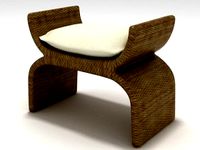
Woven X Bench 668-11-9
...woven x bench 668-11-9
designconnected
baker woven x bench 668-11-9 benches computer generated 3d model. designed by n/a.
3d_export
$160

3d building 668 3D Model
...metropolis street block detailed definition realistic skyscraper huge collection
3d building 668 3d model kanhtart 44729 3dexport
3d_export
$50

3D Home 668 3D Model
... chair furniture texture table lamp apartment rug carpet restaurant hotel sitting
3d home 668 3d model richard3015 46945 3dexport
turbosquid
$6
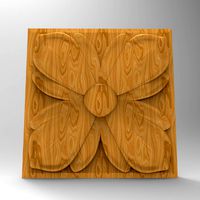
(668) Rosette -3d STL model for CNC
... available on turbo squid, the world's leading provider of digital 3d models for visualization, films, television, and games.
turbosquid
$40
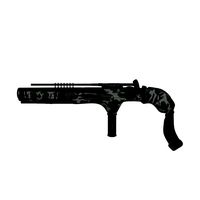
Blaster Weapon TNG-RX-668-R
...g-rx-668-r for download as dxf, obj, fbx, blend, dae, and stl on turbosquid: 3d models for games, architecture, videos. (1356710)
3d_export
$16

plants in a white pot for the interior 668
...t;br>exotic plants<br>ficus lyrata<br>howea forsteriana<br>date palm<br>cigar calathea, calathea lutea
3ddd
$1

Двухъярусная детская кровать
...двухъярусная детская кровать 3ddd двухъярусная количество полигонов : 52 668 ...
3ddd
$1

Ролики
...роликов (2 шт.) : polys: 217 718 verts: 221 668 ...
3ddd
$1
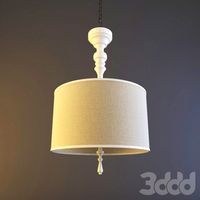
Vivien Chandelier
...chandelier 3ddd vivien , gramercy home vivien chandelier цена: 668 у.е. артикул: ch063-3 габариты: ширина 96 см глубина 96...
Iso
turbosquid
$1

iso
... available on turbo squid, the world's leading provider of digital 3d models for visualization, films, television, and games.
3ddd
$1

Стул ISO
...dd
iso , ligne roset
стул iso
размеры:
bridge w 51,5 d 52 back height 81 seat height 49
design_connected
$13
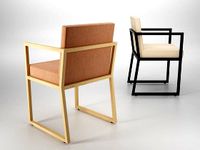
Iso Armchair
...iso armchair
designconnected
ligne roset iso armchair computer generated 3d model. designed by dorner, marie christine.
design_connected
$9
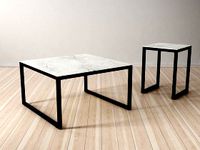
Iso Tables
...iso tables
designconnected
ligne roset iso tables computer generated 3d model. designed by dorner, marie christine.
3d_ocean
$12
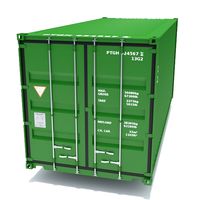
ISO Container
...dal container iso container metal container sea can shipping shipping container transport
an intermodal container (iso container)
3ddd
$1

Стул Iso (Изо)
...стул iso (изо)
3ddd
стул офисный iso
turbosquid
$50
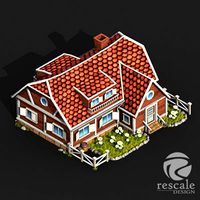
ISO Farmhouse
... available on turbo squid, the world's leading provider of digital 3d models for visualization, films, television, and games.
turbosquid
$10

Iso Chair
... available on turbo squid, the world's leading provider of digital 3d models for visualization, films, television, and games.
turbosquid
$10
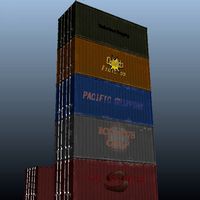
Iso Containers
... available on turbo squid, the world's leading provider of digital 3d models for visualization, films, television, and games.
3d_ocean
$19

Old Rusty ISO Container
...iner ocean transport container old rust rusty transport truck vessel
a retexturized my iso conainer to make it look old and rusty
Multiple
turbosquid
$35

Multiplicity
...royalty free 3d model multiplicity for download as ma and fbx on turbosquid: 3d models for games, architecture, videos. (1239815)
turbosquid
$10

Bacteria Multiple
...y free 3d model bacteria multiple for download as max and obj on turbosquid: 3d models for games, architecture, videos. (1524320)
turbosquid
$19

Multiplicity Table
... available on turbo squid, the world's leading provider of digital 3d models for visualization, films, television, and games.
turbosquid
$10
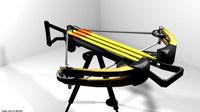
Crossbow - Multiple
... available on turbo squid, the world's leading provider of digital 3d models for visualization, films, television, and games.
turbosquid
$1

Multiple library
... available on turbo squid, the world's leading provider of digital 3d models for visualization, films, television, and games.
turbosquid
$5

Multiple Barrel Gun
...royalty free 3d model multiple barrel gun for download as obj on turbosquid: 3d models for games, architecture, videos. (1296931)
turbosquid
$4

Multiple Coffee Table
...yalty free 3d model multiple coffee table for download as fbx on turbosquid: 3d models for games, architecture, videos. (1507294)
turbosquid
$50
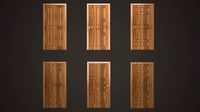
Multiple Design Doors
...ee 3d model multiple design doors for download as max and obj on turbosquid: 3d models for games, architecture, videos. (1594384)
cg_studio
$1500

Multiplication GUY3d model
...haracter man
professional 3d model multiplication guy - .max - , royalty free license available, instant download after purchase.
turbosquid
$150

Multiple F-16s
...ree 3d model multiple f-16s for download as max, obj, and fbx on turbosquid: 3d models for games, architecture, videos. (1386346)
Configurations
3d_export
free
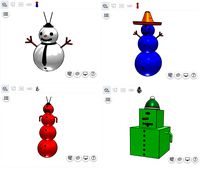
snowman with configurator
...snowman with configurator
3dexport
create your own original snowman by using configurator:
design_connected
$27
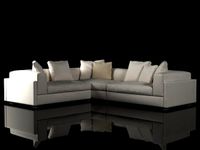
Alison configuration 01
...ison configuration 01
designconnected
minotti alison configuration 01 computer generated 3d model. designed by dordoni, rodolfo.
design_connected
$27
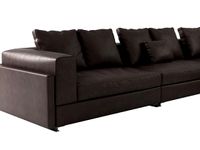
Alison configuration 02
...ison configuration 02
designconnected
minotti alison configuration 02 computer generated 3d model. designed by dordoni, rodolfo.
design_connected
$27
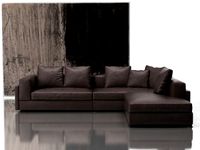
Alison configuration 03
...ison configuration 03
designconnected
minotti alison configuration 03 computer generated 3d model. designed by dordoni, rodolfo.
design_connected
$27
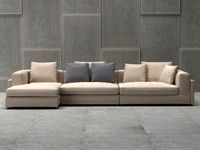
Alison configuration 04
...ison configuration 04
designconnected
minotti alison configuration 04 computer generated 3d model. designed by dordoni, rodolfo.
turbosquid
$4

Multiple Configurations Chair
...e configurations chair for download as max, fbx, 3ds, and obj on turbosquid: 3d models for games, architecture, videos. (1595432)
turbosquid
$571
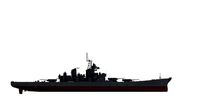
Battleship Missouri 1990s Configuration
...issouri 1990s configuration for download as max, obj, and fbx on turbosquid: 3d models for games, architecture, videos. (1364490)
3d_export
$35
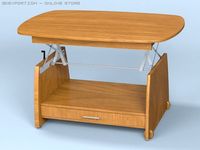
Small configurable table 3D Model
...
3dexport
furniture wooden table textures riged ready to animate organised
small configurable table 3d model lukeb 26655 3dexport
3ddd
$1
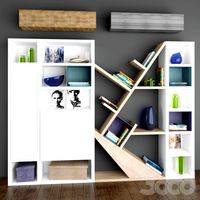
GAUTIER FRANCE, Preface Configuration 7
... 305.5см x высота: 231см x глубина: 35.3/42смhttp://www.gautier.co.uk/our-products/living-room/bookcase/configuration-7
turbosquid
$1000

3D Suit Configurator - FULL 3D model
...onfigurator - full 3d model for download as max, obj, and fbx on turbosquid: 3d models for games, architecture, videos. (1492616)
Block
archibase_planet
free

Blocks
...blocks
archibase planet
blocks bricks toy
toy blocks - 3d model (*.gsm+*.3ds) for interior 3d visualization.
3d_export
$5

Block
...block
3dexport
3d_export
$10
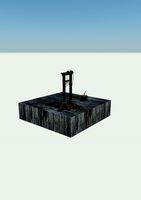
The guillotine and the block
...the guillotine and the block
3dexport
the guillotine and the block autocad 2013
3d_ocean
$8

Concrete Blocks
... blocks, barriers or cover for characters during a fire fight. each one has its own diffuse map, specular and normal map in tg...
archibase_planet
free
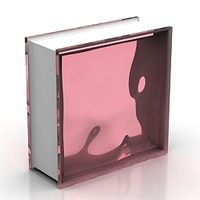
Glass block
...glass block
archibase planet
glass block brick
glass block n211009 - 3d model (*.gsm+*.3ds) for interior 3d visualization.
3d_export
$99

city block
...city block
3dexport
city block 3d model. include max, obj and fbx files.
3d_ocean
$3
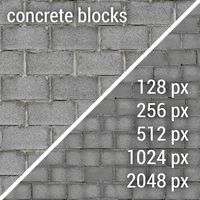
Concrete Blocks Textures
...res
3docean
block blocks concrete seamless wall walls
a couple of seamless textures with two differents sizes of concrete blocks.
3d_export
$5
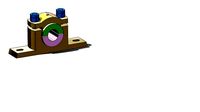
plummer block
...plummer block
3dexport
this is an 3d model of plummer block assembly where seven parts are required to assemble this.
design_connected
$16

Block 2
...block 2
designconnected
henry pilcher block 2 computer generated 3d model. designed by pilcher, henry.
3d_export
$7
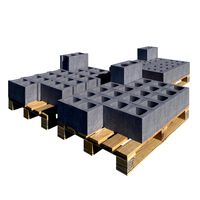
concrete blocks on pallets
...concrete blocks on pallets
3dexport
concrete blocks on pallets, 3 types of blocks. there are all the necessary textures.
Container
3d_export
$5
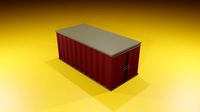
container
...container
3dexport
3d model of a commercial container, cargo container, container
3d_ocean
$15
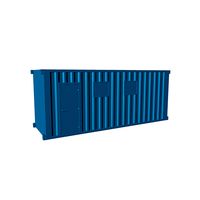
container
...container
3docean
container
create container in maya
archibase_planet
free

Container
...ontainer freight container transport container
container shipping n290612 - 3d model (*.gsm+*.3ds) for exterior 3d visualization.
3d_export
$5
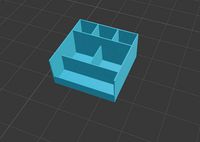
container
...container
3dexport
container
archibase_planet
free
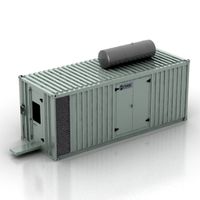
Container
...
archibase planet
container shipping container
container industry n250114 - 3d model (*.gsm+*.3ds) for exterior 3d visualization.
3d_ocean
$7
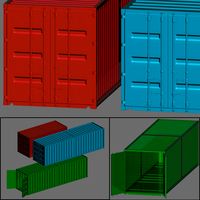
Container
...te industrial iso container ocean ocean transport container port ship shipment shipping transport truck vessel
detailed container
archibase_planet
free
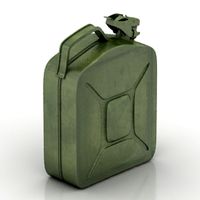
Container
...errycan container jerry can jerrican fuel container
container gas n250815 - 3d model (*.gsm+*.3ds) for interior 3d visualization.
3d_ocean
$5

Containers
...containers
3docean
barrel black blue bottle container jerrycan
2 containers of hight quolity. renderer in mentalray
archibase_planet
free

Container
...container
archibase planet
container kitchen ware
container - 3d model (*.gsm+*.3ds) for interior 3d visualization.
archibase_planet
free

Container
...container
archibase planet
container dustbin
container n180209 - 3d model (*.gsm+*.3ds) for interior 3d visualization.
